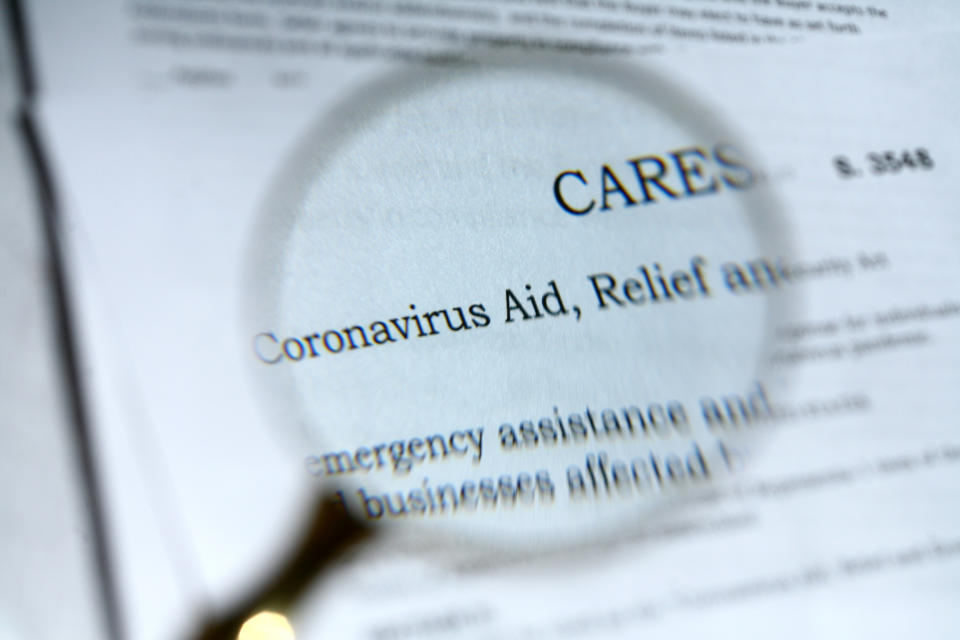From deepfakes to PPP: How one tech startup is helping banks process SBA loans
The influx of lending brought on by the economic fallout from COVID-19, has not only flooded the banking system, it’s also exposed a glaring flaw in the lending process — the need for human contact to conduct due diligence.
With loan officers limited by social distancing measures, lenders like the Opportunity Fund, a California-based non-profit business lender, are substituting on-site visits with image verification technology to ensure their funds get to the businesses that need it most.
“With the shelter-in-place order in California, loan officers and our sales team that were typically able to go out to the business and meet with the business owners now can’t,” said Anthony Giuliano, director of underwriting and credit policy at Opportunity Fund. “We were able to kind of quickly shift gears and pivot and use this technology even where we were doing more traditional in person lending.”
Craig Stack, co-founder of San Diego–based Truepic, the startup behind the technology, says he has been flooded with calls from banks and insurance companies since the coronavirus outbreak prompted stay-at-home orders across the country. In the last three weeks alone, Truepic has signed new partnerships with seven major insurance carriers, adding to a portfolio that already includes at least half a dozen lenders, and one of the top five banks, which asked not to be named.
“They’re looking to verify and validate information before they push money out the door, and we're able to do that in a time where they can't get boots on the ground,” Stack said.

Leveraging tech to ‘eliminate perpetrators’
Truepic uses controlled capture technology to lock in a photo or video the instant it is created. That allows users to authenticate the pixel data of an image and certify the time, date, and location at the moment of capture. Each image comes with a URL, so anybody capturing the content can prove that it’s real in the future.
Stack, a Goldman Sachs (GS) alum, says the technology allows banks to run images through 22 fraud detection and prevention tests within five seconds of capture. It also differentiates original photos from screen shots, an especially important function that prevents applicants from submitting stock photos in place of their own.
Truepic’s growth comes as lenders face overwhelming demand, the Small Business Association’s Payment Protection Program. Online lending platform Credibly said it was processing three applications a minute, in the initial days following the PPP launch, forcing the company to rely heavily on technology to root out fraud.
Credibly requires site inspections for all loans over $100,000.
“We send a text message out to the small business owner, and [Truepic] walks them through step-by-step instructions as to what they need to take pictures of. For example, if we want a picture of their signage inventory, credit card terminal. If they're in the construction business and they have a bunch of backhoes, we might ask for pictures of their equipment,” said Credibly founder and co-CEO Ryan Rosett. “We feel comfortable so it's not as if somebody in Russia is taking a photo of some backhoes and then sending it to us to try to fraud money. We’re constantly using fraud tools to eliminate perpetrators.”
From deep fakes to loan fraud
Growth in lending and insurance is an unexpected twist for a company that set out to address online image manipulation, particularly on social media.
When Stack co-founded the company in 2015, he went after Craigslist scammers and those lurking on dating sites.
In recent years, Truepic has moved to halt the use of deepfakes, or AI generated content, by working closely with companies like Qualcomm (QCOM) to embed its technology natively on all smartphones that utilize Qualcomm’s chips.
The pandemic has prompted the company to pivot quickly, to help accelerate change in sectors that have traditionally been slow to digitize.
“It just took everything that we were doing, and it just turbocharged it, and put it front and center on all of these companies plates,” Stack said. “Where they previously could have said, ‘Wow, we got this process it's working, why rock the boat,’ They're saying, ‘Oh my god, we have to underwrite policies, we have to underwrite loans. We need verification of the home or business, and we literally can't get that trusted information that we're required to have with our underwriting process.’”
Akiko Fujita is an anchor and reporter for Yahoo Finance. Follow her on Twitter @AkikoFujita
Seattle Mayor considers reopening economy ‘sector by sector’
‘We’re still on the uptick’: Miami Mayor says South Florida weeks away from coronavirus peak
Delivery demand amid coronavirus prompts workers to walk out, disrupting operations
‘Once-in-a-century disruption’ reverberates across global supply chains

 Yahoo Finance
Yahoo Finance 
